So to cut to the chase-"get forward", "pressure the tongue with your shin" and "push your knees forward" have always been useless for me because I didn't know HOW to do that.
Leaning forward just pushed my butt out and felt weird, CoM still being too much to the back. I could feel the boot tongue at best, no way to flex it like you could just standing and leaning into it.
Yesterday I finally managed to start flexing the boot tongue and pushing into it in curves by doing one, and then another thing that sound opposite to each other. First I felt like I was trying to rip the heel out of the boot of the outside leg and that sure pushed the tongue. But I lost a lot of precious control and feel I've been building up to for days before that. Tenderness on the middle of the inside of the heel skin as proof. Then as I tried to regain feel and control I kind of starting putting pressure on the mid-heel(as opposed to the ball of the foot or even worse, toes) on the outside leg to make it carve.
I guess I'm asking for general comments and advice to try and speed up the process. Only 15 ski days in or so, spread over 3 years.
I'd say this is phase 6 of learning:
Phase 1: can turn left, can barely turn right, same for hard braking, low control, scary over bumps and moguls built up in the afternoon. Pushing off of my curled up toes.
Phase 2: can turn well both sides, but now I notice that I'm turning with twisting my body and basically trying to turn my butt downhill. More control. Toes not curled unless scared which...happened a lot.
Phase 3: chest down the slope, much easier to ski and going faster but still skidding all turns.
Phase 4: Breakthrough, starting to carve right turns, still skidding left turns, or carving them less, pushing off the ball of the foot.
Phase 5: same but chest straight down the slope and legs going "around" the body, nice feeling albeit a bit scary. Blasting through bumps and small moguls as if they aren't there.
Phase 6: where I am now, until now I would just touch the boot tongue or just catch myself pressuring the rear of the boot and then panic and adjust forward. Now I am finally pressuring the tongue deliberately but lost some of the "elegance" and carving consistency. Feel powerful though.
Leaning forward just pushed my butt out and felt weird, CoM still being too much to the back. I could feel the boot tongue at best, no way to flex it like you could just standing and leaning into it.
Yesterday I finally managed to start flexing the boot tongue and pushing into it in curves by doing one, and then another thing that sound opposite to each other. First I felt like I was trying to rip the heel out of the boot of the outside leg and that sure pushed the tongue. But I lost a lot of precious control and feel I've been building up to for days before that. Tenderness on the middle of the inside of the heel skin as proof. Then as I tried to regain feel and control I kind of starting putting pressure on the mid-heel(as opposed to the ball of the foot or even worse, toes) on the outside leg to make it carve.
I guess I'm asking for general comments and advice to try and speed up the process. Only 15 ski days in or so, spread over 3 years.
I'd say this is phase 6 of learning:
Phase 1: can turn left, can barely turn right, same for hard braking, low control, scary over bumps and moguls built up in the afternoon. Pushing off of my curled up toes.
Phase 2: can turn well both sides, but now I notice that I'm turning with twisting my body and basically trying to turn my butt downhill. More control. Toes not curled unless scared which...happened a lot.
Phase 3: chest down the slope, much easier to ski and going faster but still skidding all turns.
Phase 4: Breakthrough, starting to carve right turns, still skidding left turns, or carving them less, pushing off the ball of the foot.
Phase 5: same but chest straight down the slope and legs going "around" the body, nice feeling albeit a bit scary. Blasting through bumps and small moguls as if they aren't there.
Phase 6: where I am now, until now I would just touch the boot tongue or just catch myself pressuring the rear of the boot and then panic and adjust forward. Now I am finally pressuring the tongue deliberately but lost some of the "elegance" and carving consistency. Feel powerful though.
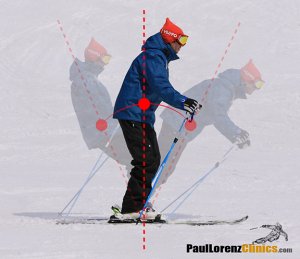
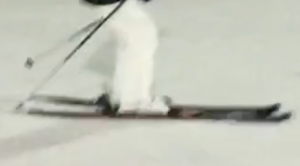
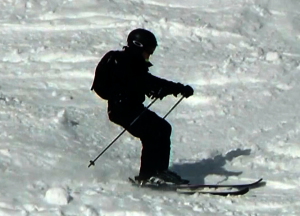
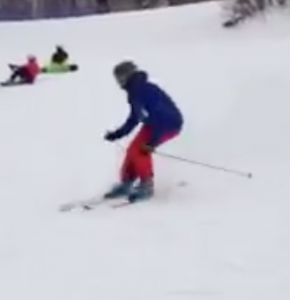
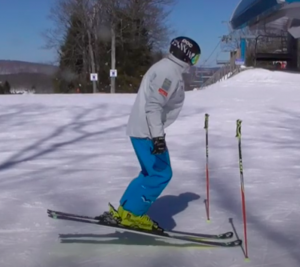
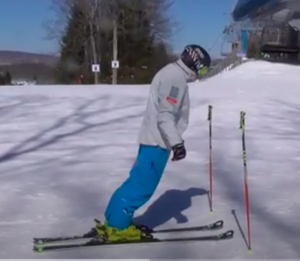
 .
.